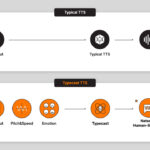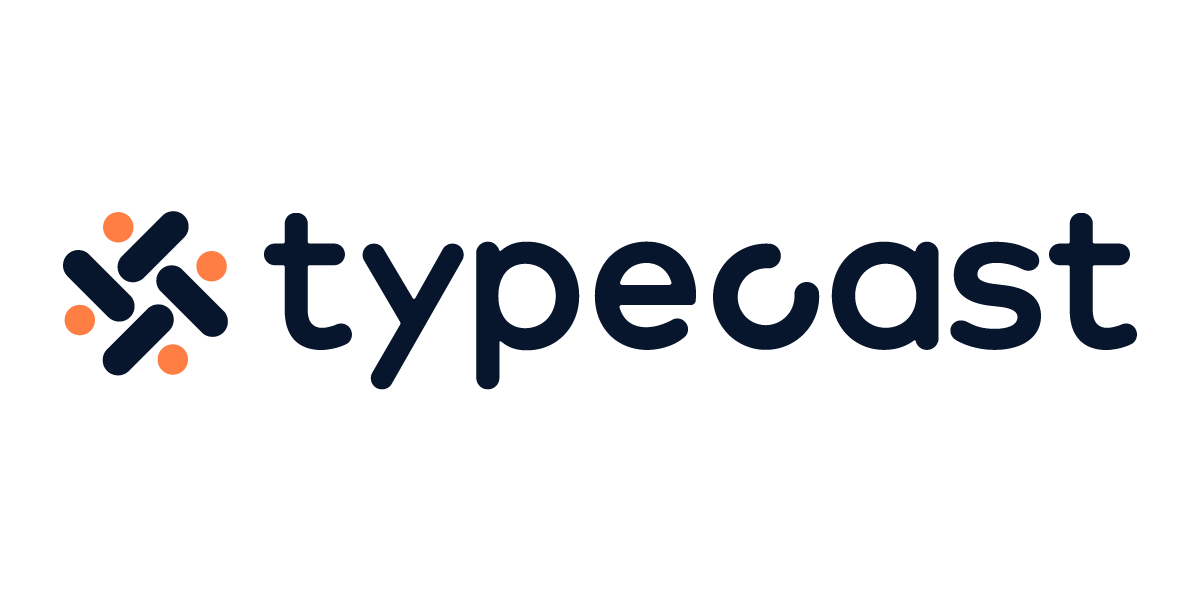In our technologically-advanced society, using AI voice-overs for eLearning content is becoming increasingly popular. By using AI voices, educators and small business owners can create engaging and interactive learning experiences without hiring an expensive human voice actor. This cost-saving measure allows teachers to focus their resources on creating high-quality educational material that is interesting and effective. AI voices also offer learners a more immersive experience, as they can sound like a real person’s voice.
AI voice-overs are computer-generated voices that can provide a more natural-sounding voice than traditional text-to-speech software, making them ideal for creating engaging and informative eLearning content for visual learners. This article will discuss several ways to use AI voices to create engaging and effective eLearning content.
AI voice-overs for eLearning content
AI voice-overs are computer-generated voices that can be used to narrate eLearning courses, video tutorials, and other educational materials. With the increasing availability of internet access, individuals are exploring various means to streamline tasks. One such application is using quality voice-overs for eLearning, utilizing the internet to prioritize acquiring knowledge and pursuing learning opportunities.
Educational content with voice-overs is good for:
- All medical and health fields.
- Making software tutorials.
- eLearning modules.
- Live training playback videos.
Nowadays, your target audience may find e-learning more convenient than traditional classes as it helps them grasp information better. The current situation makes sense, considering that approximately 30% of people are auditory learners. However, one of the advantages of e-learning is that there is still room for improvement. Depending on the professional development journey, eLearning should keep learners engaged.
Importance of using eLearning voice-overs

Using AI voice-overs in eLearning content has many advantages. It allows learners to better understand the material by providing a more natural-sounding narration than traditional text-to-speech software.
Aside from that, using eLearning voice-overs has other benefits:
- Improves Accessibility – Consider providing your audiences with on-the-go learning options to accommodate their busy lifestyles.
- Increases Engagement – It can help to make tedious material more engaging by adding audio effects such as background music or sound effects.
- Improves Affordability – Using AI voice-overs for eLearning can help to save time and money by eliminating the need for hiring a professional voice artist. So, an educator doesn’t have to be present, nor do you have to pay their expensive fees.
Consider this: the more senses someone uses to understand something, the more likely they will remember it. eLearning voice-overs can help engage learners’ auditory senses during the learning process and increase their recall of information.
Using voice-overs for eLearning content also creates the opportunity to be more inclusive and develop lessons in many different languages without worrying about the cost of multiple voice actors or low-quality translation services.
Using Kindle text to speech tools for eLearning
While reading has numerous benefits, such as enhancing vocabulary and reducing stress levels, some individuals may find it challenging, primarily those struggling with reading comprehension or reading in general.
The Kindle text to speech feature is popular for creating AI voice-overs. By using this built-in feature, users can enable text to speech on their Kindle devices so that they can listen to books or other documents without having to read them.
The Kindle text to speech feature also has male and female voices in multiple languages and accents, so users can choose the one that best suits them.
How to enable text to speech on the Kindle app
Enabling text to speech on your e-reading device is easy. You can follow these simple steps to use the text-to-speech feature in your Kindle app.
- Download and install the Kindle app if you haven’t yet.
- Go into your Kindle app menu and select Library from the list of options.
- Select the book or file you want to enable text to speech for and click on it to open it.
- From there, tap on the screen, and it will bring up the menu bar. Select the Aa option.
- The following menu should be what you need. Then, tap on Text to Speech and customize the experience.
- You can select which language and accent you would like your device’s text to speech feature to use and adjust its speed and volume settings if desired. Once you have selected your preferred settings, press Start Reading, and you will be ready to listen.
When you’re ready, tap the screen again and select Stop Reading to do something else. Fortunately, the Kindle app isn’t just available for an e-reader but also for iOS and Android devices.
If you want to use a Kindle e-reader, enabling the AI voice-over feature is much simpler. To enable it, you’ll go to your Menu > Settings > Accessibility > VoiceView Speech settings. Use the slider to adjust how fast or slow the text is read aloud.
Pros and cons of the Kindle text to speech feature

The pros of using the Kindle Text To Speech feature include its ease of use, ability to provide eLearning narration in a wide range of different voices in multiple languages and accents, adjustable speed and volume settings, and cost-effectiveness when compared with hiring professional narrators or actors.
The cons include its limited range of available voices, and you’ll need a compatible Bluetooth device to use the feature on your Kindle. Furthermore, only the 7th generation and later Kindles can use VoiceView Reader for eLearning content.
PDF text reader for your eLearning course
Creators also use AI voice-overs for eLearning by taking a PDF text reader and creating content. These programs allow users to open PDF files on their computers or mobile devices and have them read screen content aloud using an AI-generated voice.
You can create eLearning voice-overs easily, and it sounds pretty good. One of the main focuses is narration and allowing users to add voice-overs to their training videos.
Either way, the process is relatively straightforward as long as you have a high-quality text to speech app like Typecast.
How to use AI voice-over for eLearning courses?

Creating voice-over content isn’t hard and can be fun and engaging. Here’s a brief overview for any new creators out there:
- Start by creating your voice-over script. When considering a script for eLearning content, maintain a professional yet conversational tone. Think of who the courses are for and try to relate to them as much as possible.
- Choose your voice-over talent wisely. With Typecast, you can select from various voices – male, female, human-like, and robotic. But remember that the key to getting quality voice-over content is to find the right voice.
- Take your course length into consideration. AI voices are great for short eLearning content, but you’ll need to break it up into parts for longer ones. Consider using different voices for each piece, or switch up the cadence to keep your audience engaged.
- Editing and finalizing are necessary before publishing your lessons. Don’t skip this step. Make sure that your audio is clear and free from any background noise. Also, double-check that the content fits the learning objectives. Your AI voice character should also have natural pauses in the script to give learners time to process what they’ve heard.
Heavy-duty editing may be a bit too challenging for a newbie creator. Typecast can help you avoid issues like white noise, audio recording quality, and other editing steps when working with audio files. However, due to the customizable nature of Typecast’s AI voice library, educators can edit and customize voice-overs using practical and intuitive editing tools.
Advantages of using a PDF text reader
Using a PDF reader with built-in text-to-speech capabilities has several advantages over using traditional text-to-speech software, such as increased accuracy when reading complex documents due to improved algorithms, support for multiple languages, adjustable speed, and volume settings, compatibility with all major operating systems, ability to save audio recordings, etc.
How to optimize PDF readability
To optimize PDF readability, your document needs properly formatted headings, lists, tables, images, etc. Don’t forget to check your file for any typos or errors before attempting to have it read aloud using an AI-generated voice. If possible, try adjusting your document’s font size, typeface, and line spacing so it’s easier for students to follow along.
Creating training videos: Video content for eLearning
Creating videos for eLearning content is another excellent way of utilizing AI technology. By incorporating video into your online course material, you can engage students and increase retention rates by providing visual cues and audio narration.
Remember, activating more senses is the key to better retention. When you create video for eLearning content, you should keep things simple but effective.
The content of standalone training videos should focus on delivering key points rather than trying too hard to be engaging; use visuals whenever possible, but avoid long monologues. Use basic but powerful video editing tactics to smooth the transitions, and use AI-generated voice-overs for the narration. This will make the videos more professional and add a touch of personalization to help students relate to the material.
Fortunately, Typecast has AI-generated virtual avatars that teachers can pair with their AI voice-overs to add an element of visual engagement to their eLearning content. For example, with Typecast’s AI voice library, educators can create engaging and interactive videos that will grab their students’ attention. Who knows, making videos with voice artists and virtual avatars could be the next big thing for eLearning.
The future of AI voice-overs in eLearning

As technology continues advancing at an ever-increasing rate, we will likely see even more significant advancements in how AI technology is utilized within education and training.
It’s safe to say that the direction of voice-overs for eLearning will relate to creating engaging and informative eLearning content via automated means, i.e, voice talent, machine learning algorithms, and NLP. We may even see further advancements in incorporating facial recognition technologies into our existing video creation workflows.
Including virtual avatars using Typecast will allow creators and educators to produce even more personalized learning experiences tailored to the target audience’s needs. The future of AI voice-overs in eLearning looks incredibly promising, and we can’t wait to see what else is in store. So, if you want to produce digestible and interactive eLearning content for your students, try Typecast’s AI voice library. You won’t be disappointed.













